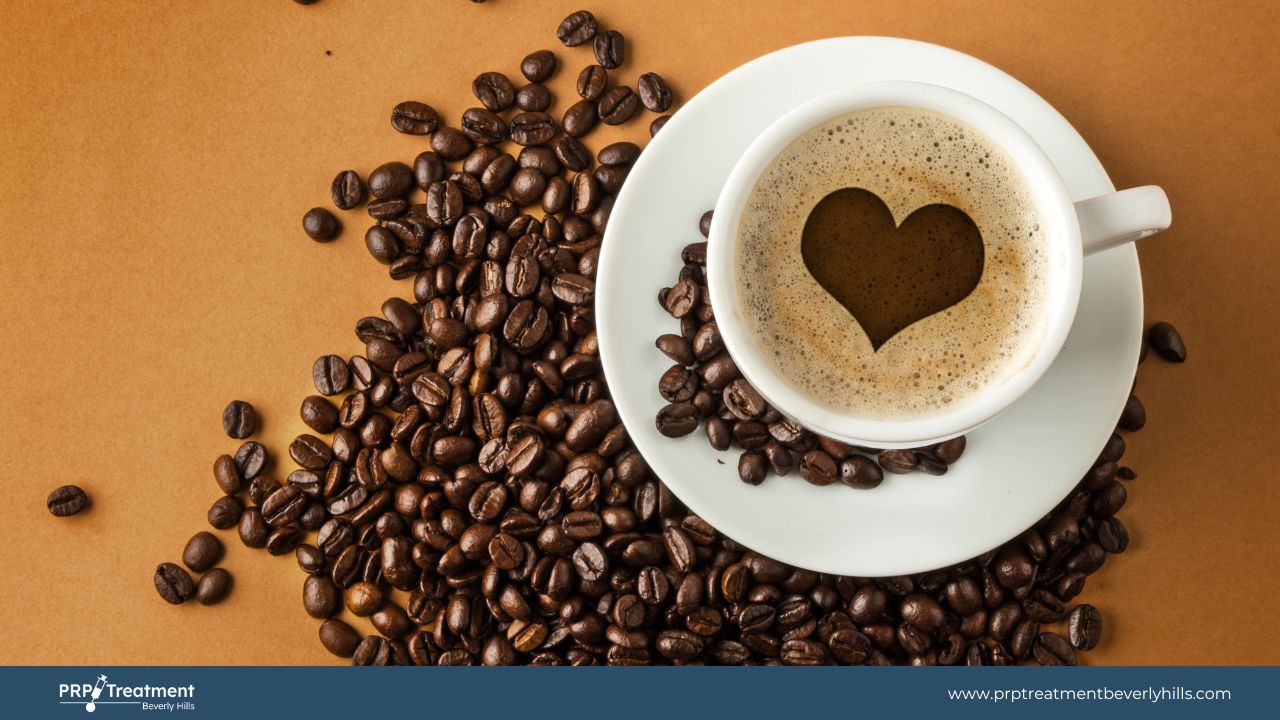PRP, or platelet-rich plasma, is a cutting-edge treatment option for various conditions and injuries. As a patient prepares for their PRP treatment, it’s essential to understand the factors that can influence the potential efficacy of the treatment.
One such factor is caffeine consumption, as it can alter platelet function and potentially impact the effectiveness of PRP. In this article, we’ll dive into the science behind why it’s recommended to avoid caffeine before a PRP treatment and other factors that may impact the treatment.
Why No Caffeine After PRP
Consuming caffeine after PRP (Platelet-rich Plasma) treatment is discouraged as it can increase blood flow and dilate blood vessels, potentially affecting the healing process of the treated area and worsening bruising and swelling. It’s best to avoid caffeine for a period recommended by your healthcare provider.
It is recommended to avoid caffeine, alcohol, Niacin supplement, spicy foods, and cigarettes between 1 to 3 days before and after your treatment. The exact time to avoid caffeine after PRP treatment can vary depending on the patient and their treatment.
How Does Caffeine Affect Platelet Count?
Caffeine itself does not impact platelet aggregation or the count. However, drinking coffee may affect platelet aggregation. Coffee drinking decreases platelet aggregation and significantly increases phenolic acid platelet concentration.
Scientists believe it’s the coffee phenolic acid that influences the aggregation process. However, another study found no significant impact of coffee on platelet aggregation. Thus, extensive research and larger randomized studies are required to find the connection between platelet count, aggregation, and caffeine.
What to Avoid After PRP Injections?
After PRP (Platelet-rich Plasma) injections, it is recommended to avoid the following activities or substances:
- Alcohol: It can increase bleeding and affect the healing process.
- Anti-inflammatory medication: Ibuprofen and aspirin can thin the blood and reduce the effectiveness of PRP treatment.
- Strenuous exercise: Vigorous physical activity can increase blood flow and stress the treated area, potentially affecting the healing process.
- Hot tubs and saunas: They can increase blood flow and raise the body’s temperature, potentially affecting the healing process.
What Can Cause A False High Platelet Count?
A false high platelet count can occur due to several factors, including:
Platelet clumping: Platelets can clump together during blood collection or processing, leading to a false high count.
Hemolyzed blood: Hemolysis, or the breakdown of red blood cells, can release platelets and artificially increase the platelet count.
Machine error: Inaccurate readings can occur with specific laboratory equipment leading to a false high platelet count.
Medications: Certain medications, such as heparin and aspirin, can artificially increase the platelet count.
Dehydration: Dehydration can cause a concentration of platelets in the blood, leading to a false high count.
It is essential to inform your doctor if you suspect a false high platelet count, as it can impact the interpretation of medical tests and treatments.
What Variables Affect The Potential Efficacy of PRP?
The potential efficacy of PRP (Platelet-rich Plasma) treatment can be affected by several variables, including:
Platelet count
The number of platelets in the blood of healthy individuals varies between 150,000 to 450,000 per μL, with some having higher or lower counts. The device used to prepare the PRP solution will determine the platelet concentration, which can vary up to 3 times.
Blood Pressure
High blood pressure can decrease platelet count and release platelet factors into the blood plasma. Lowering blood pressure briefly before PRP preparation may be beneficial to increase the platelet count and recover normal factor content.
Stress
Mental and physical stress, such as mental math, public speaking, exercise, or surgery, can induce platelets to release bioactive compounds. Reducing stress before PRP preparation will result in PRP with a full complement of platelet bioactive compounds and platelets that are not pre-induced to aggregate.
Diet

A diet high in saturated fats, excessive sugar, caffeine, or simple carbohydrates can induce and increase platelet aggregation. Before PRP, a patient’s diet should be evaluated and adjusted to improve potential analgesic efficacy.
Drugs and Consumables
Alcohol consumption and smoking can affect platelet activation and aggregation, while certain drugs and drug therapies can suppress normal platelet functions. Reducing or eliminating these consumables before PRP may allow platelets to reestablish normal factor content and aggregation properties.
Blood Glucose Levels
The PRP separation process can increase the glucose concentration in the PRP by 3 to 6 times compared to the starting blood. This increase can impact PRP efficacy as higher glucose levels can lead to increased platelet activation. Finding the right balance between activated and unactivated platelets is vital to get maximum efficacy from PRP.
Platelet Activation Methods
For platelet healing factors to be effective, they must be activated first. Different activation methods like thrombin, calcium chloride, or collagen type I can lead to different rates and types of platelet clotting, factor release, and timing of factor release. These variations can result in different efficacies of PRP depending on the available factors and the timing of their release.
Local Anesthetics During Injection
Some patients receive local anesthetics before PRP injections to reduce pain. However, it’s important to note that local anesthetics can decrease platelet function but do not appear to interfere with the release of platelet growth factors. Further research is needed in this area.
Timing of PRP Administration
PRP is typically injected into the chronic pain site several weeks after injury. For rats, the optimal time for PRP administration is immediately after injury, but there is limited information about the best timing for PRP administration in humans.
Final Words
It is important to avoid caffeine consumption before PRP treatment as it can negatively impact the platelet function and, ultimately, the effectiveness of the treatment. Adhering to a diet that supports platelet function and avoiding substances that could interfere with the platelets’ ability to aggregate can optimize the results of PRP therapy.
It is recommended to have a detailed discussion with your healthcare provider to understand the best pre-treatment protocols for your specific case. Consult Dr. David Nazarian in PRP Treatment Beverly Hills clinic for a professional and thorough review.



